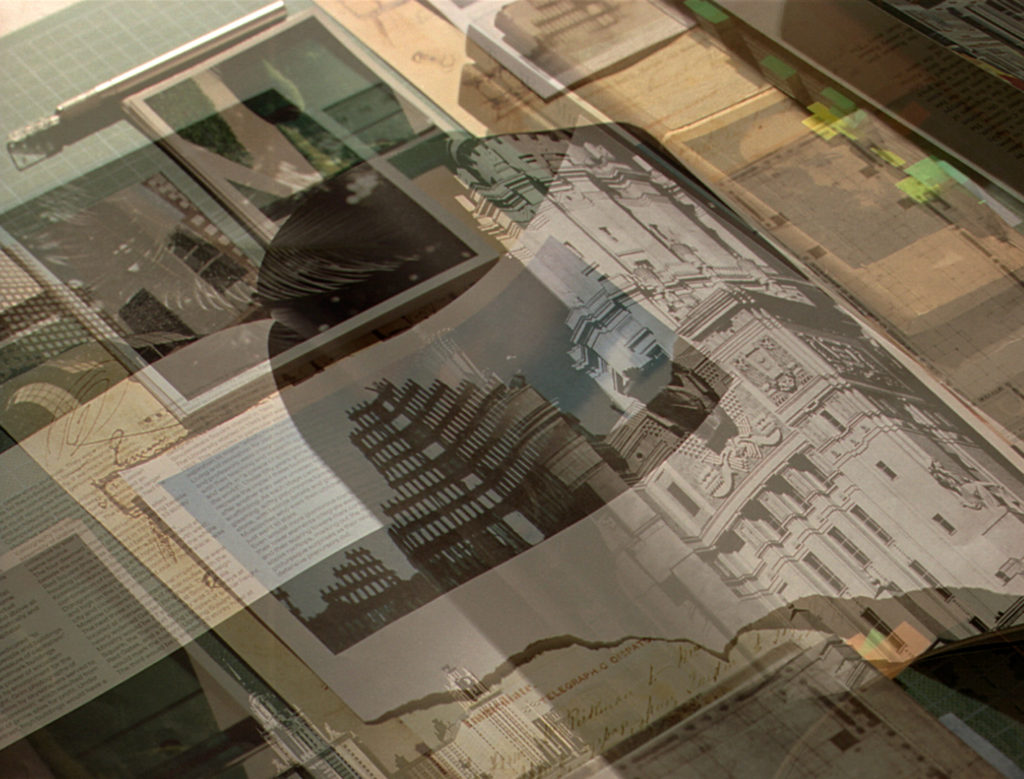Paul Kuimet
Material Aspects
2020

Material Aspects is an essay film by Paul Kuimet, screened on the desktop of an unknown collage artist. Browsing through material such as archival excerpts, magazines, books and photographs, we are introduced to the history of modernist glass architecture. The story of the film begins in 1850, when Joseph Paxton, a designer of greenhouses, makes a sketch of the Crystal Palace on a piece of paper. A rapid programme of planning and construction work begins and, in less than a year, this truly unique building will be completed. Over the next few years, buildings inspired by the Crystal Palace were erected in New York, Montreal, Munich and Sydney, among other places.
The film refers to the paradox Marshall Berman described in the early 1980s: the dystopian glass cities depicted in Soviet science fiction became a reality on the other side of the Iron Curtain under the conditions of the so-called free market economy. The best-known example is the transparent glass city depicted by Yevgeny Zamyatin in his 1921 novel We, in which the inhabitants are constantly monitored. In reality, glass houses are mostly opaque. Hidden behind their reflective facades are the structures that dominate our world order, such as banks, ministries, courts and law enforcement agencies.
The work is an example of the autofiction in Kuimet’s work. Material Aspects is his first sound and narrative film. It is easy to see Kuimet himself in the anonymous collage artist, walking down Wall Street or standing at the foot of the One World Trade Center with a camera in hand.